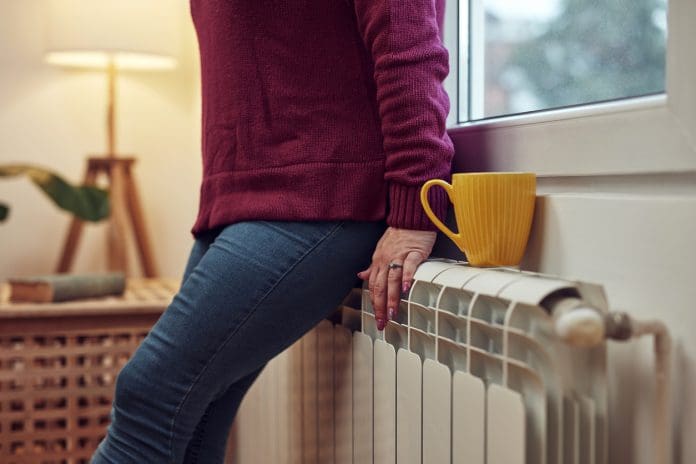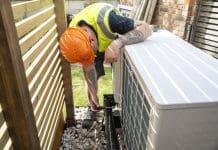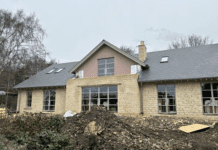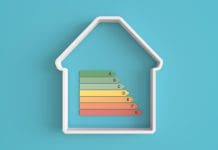We spoke with Terry McGivern, managing director of LOGSTOR, about the district heating industry and how it can help create a more sustainable heating sector
LOGSTOR is part of the Kingspan Group and has a 60-year legacy in sustainable solutions. They specialise in pre-insulated pipes, serving clients with innovative and eco-friendly products.
Could you provide a brief overview of district heating and how it differs from traditional heating methods? What are the primary components of a district heating system?
District heating has three steps. There’s the heat generation, there’s the transmission lines, and then there’s the billing customer.
At LOGSTOR, we are only interested and involved in the middle part; we don’t generate the heat, and we don’t bill clients. We work with municipalities, energy companies, and utility companies.
Regular heating systems work on a one-to-one system; district heating uses a one-to-many approach. If we switch on our boiler, we will actually fill up the hot water tank with hot water, but we won’t necessarily use it all. Lots of it will go to waste.
If you’re connecting 10,000 homes with the same water, instead of those 10,000 homes all having an inefficient use of hot water, it would be a perfectly efficient use because you would only be billed for what you’re using yourself.
Because district heating uses a pre-insulated system, you lose very little, if any, of the heat through the network. One of the main benefits of district heating is that it is the only system to use large-scale renewable energy to create heat in homes. It is also the only mechanism to capture and use waste heat. Without a district heating system, nothing can be done with waste heat.
Most homes in the UK and Ireland are heated by gas or oil-fired burners, with a small amount being used in storage heaters or heat pumps. Our experience in the UK and Ireland is inconsistent with the rest of Europe.
For example, Denmark, in the oil crisis of the late 70s, decided they were extremely exposed. They didn’t generate any of their own fossil fuels; they were importing everything, and they needed to do something different.
So, in the late 70s, Denmark decided to go after district heating to give heat security and heat localisation.
Today, nearly 70% of the Danish population is heated by district heating. In Austria, it’s around 20%, and in Germany, it’s around 15%. In the UK, only 2-3% of the population use district heating.
Waste heat is a huge issue. The Heat Roadmap Europe project assessed waste heat from all over Europe and found that 2,860 terawatt hours of waste heat is passed into the air or water in the EU. This would be enough to heat the entire water and space heat demand of all of Europe.
How does district heating work on a technical level?
District heating is energy agnostic, which is not necessarily a good thing because certain countries feed district heating using fossil fuels. In Poland, they burn coal to create heat converted into hot water that runs through district heating networks.
However, power generation can be created through combined heating power units, large solar parks, or large-scale wind parks. This power then goes through converters, that turn the energy into heated water, which is fed into the pipe system.
What are the key environmental benefits of district heating systems, and how do they contribute to reducing carbon emissions and improving air quality?
District heating won’t improve air quality if you’re feeding on fossil fuels. However, in Denmark, which has the most advanced European system, most district heating systems have three or four inputs based on renewable energy sources.
These could be biomass, geothermal, solar, wind, and waste heat, depending on which is cheapest. Using renewables can improve air quality as district heating is more suited to dense population areas. If every home in a city installed a heat pump, it would create a huge amount of expense and work inefficiently because of the one-to-one ratio. District heating would work alongside and mostly independent of the electricity grid and, if fed by large-scale renewable energies, improve air quality.
In densely populated areas, you might have one mega-scale heat pump. You may also use geothermal, wind power, and an incinerator. And all of those things would feed into that network. Because the vast majority of them are coming from non-emissions type power, the air quality is going to improve significantly.
Is a district heating network easy to install?
They are relatively easy to set up in terms of power generation. Connecting the system to homes is no different from connecting to broadband or water mains. It’s significantly cheaper and contains much less maintenance for the consumer.
I understand that the Heat Bill is passing through Parliament to ensure public housing and buildings that are in designated heat zones would connect to this type of system. This would provide a faster way to roll out renewable energy and net zero heating than trying to put a heat pump in each individual home and building.
Are there any notable examples of successful district heating projects in different regions?
There are many really good examples. Assens in Denmark has had a net zero combined heat and power system since the 1980s. It runs on solar power, windmills, biomass, and a mega-scale heat pocket.
After the invasion of Ukraine, energy prices went up significantly. In Assens, the energy supplier was making greater returns due largely to their costs not materially changing. So, in the second half of 2022, they gave customers free heat for the rest of the year. This was possible because they were earning extra money from selling electricity, which came from renewable sources and didn’t fluctuate in cost due to security issues.
This has led to more villages around Assens wanting to connect and extend the network to more homes and villages to match the generation ability of the power centre.
Are there any variables that can affect the price of district heating energy?
It’s reliable because its capex (capital expenditure) is really upfront. Because it’s coming from renewable, there’s virtually no other fluctuation apart from a little salary inflation. That feeds back through to the consumer. There’s a huge benefit there because you’re actually decoupling yourself from the fossil fuel prices, which are actually set by global events.
How does the EU’s commitment to a 55% reduction in carbon emissions by 2035 align with the broader global efforts to combat climate change, and what role does district heating play in achieving this target?
We have an industry body called Euro Heat and Power based in Brussels. Euro Heat and Power have never been busier in terms of legislation from state governments and cities looking to set up rules to propagate more district heating in the European area.
12% of the population is currently connected to district heating, and it is believed for Europe to meet its 55% objectives, it needs to get to 20% district heating use by 2030. This doesn’t sound like a lot, but if you think about it, that’s almost a doubling in seven years. It took 50 years to do in the first place.
It is a steep climb, but we’re at a stage where Europe has no other option. Even if we had enough heat pumps, could we really install them? And would we put one into every home over the next five or six years? We wouldn’t because there’s still that inefficiency of one-to-one, and it takes up space in buildings.
In densely populated areas, it makes more sense to actually try to find an electrification process that can be done in a remote location and provide renewable energy and heat to homes in a more efficient, multi-use way.
Regarding consumer awareness, what strategies can be employed to educate people about the advantages of district heating and encourage its adoption?
It starts with countries and cities. We need a greater awareness in policymaking, and to the credit of the British government, they have made good progress. Lord Callanan, the junior energy minister, is a real champion of district heating.
He told us earlier this year that ever since he was going to Brussels as an MEP, he could actually see that his building was being heated by district heating, and he was curious about it. He’s quite an advocate, and he’s really been pushing the legislation through the UK.
The net-zero department has some capable and progressive people trying to put the right policies in place. It also communicates the concept of district heating in a simple, easy-to-understand way and repeats it.
There’s a self-fulfilling aspect, so we need to approach it from two sides. I think there needs to be a journalism aspect to make it simple for people to understand.
And also, I think there needs to be a willingness to get projects going and make them successful. This allows people to talk about something tangible as opposed to something conceptual.

















